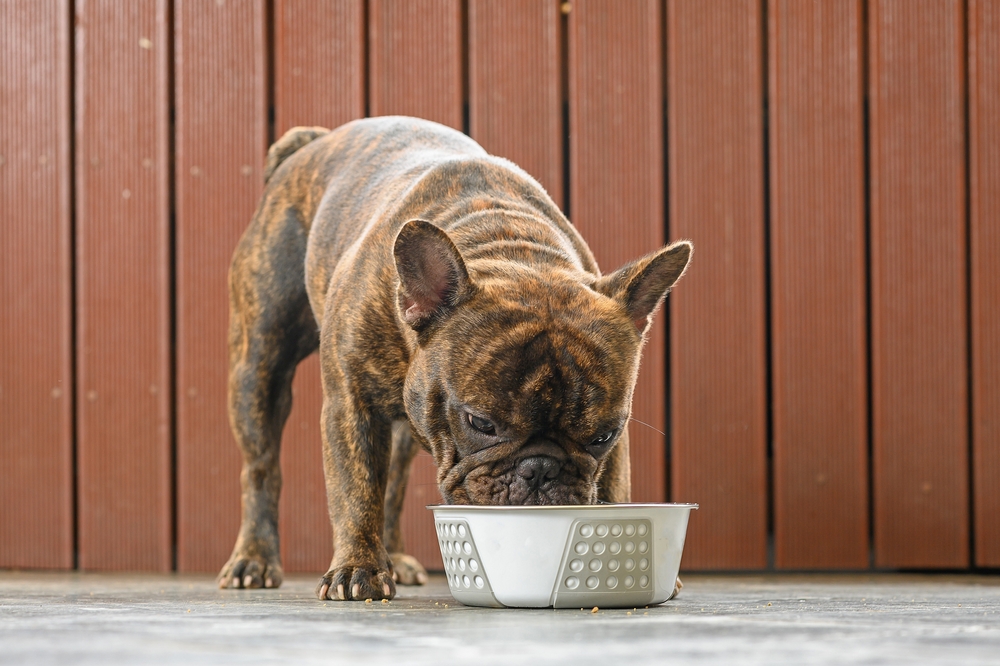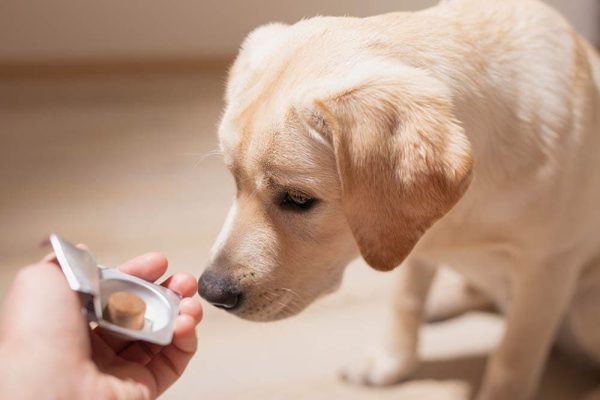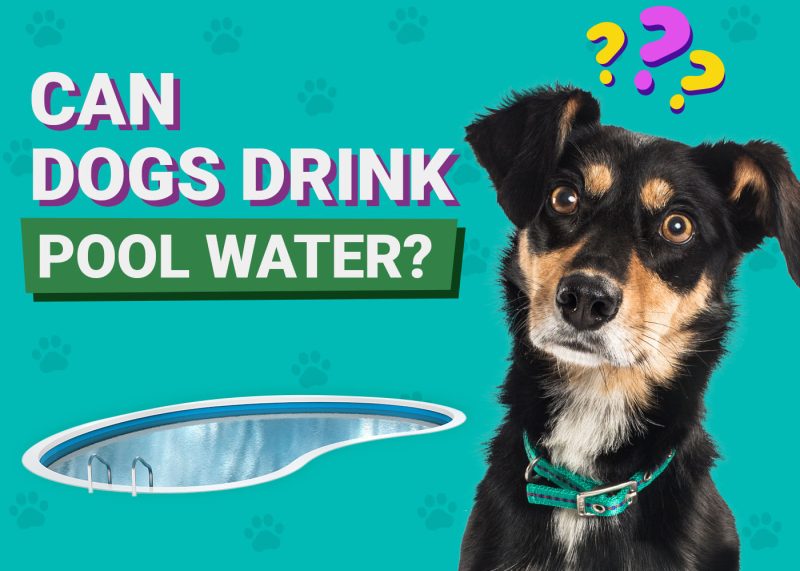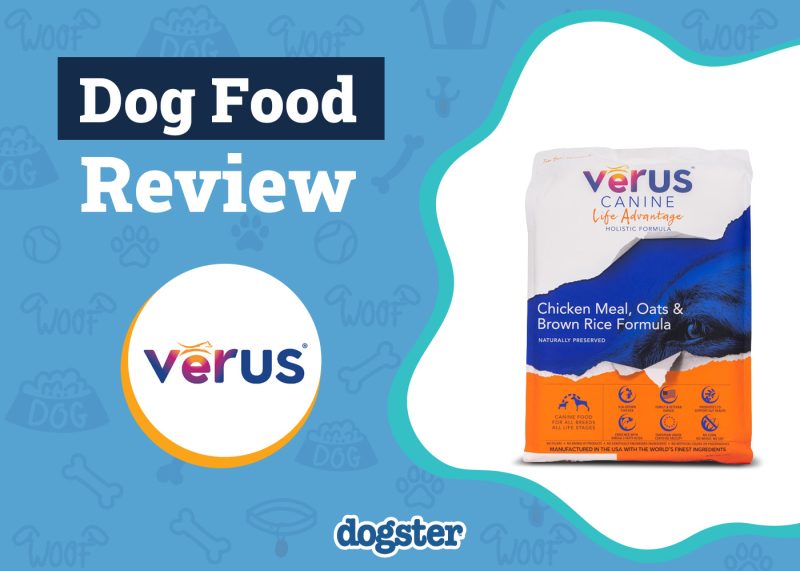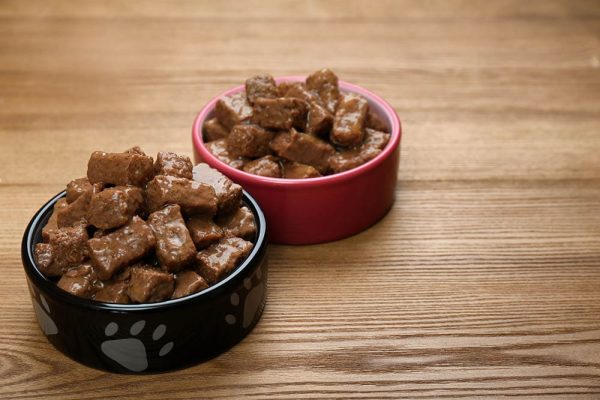In this article
View 4 More +Getting a new puppy is always so exciting! You have this little bundle of fur just wanting to eat, sleep, and play with you. As a veterinarian, we often get asked how much food is appropriate to be feeding a specific dog, in this case, a French Bulldog. This, of course, is not an easy question to answer, as each puppy and grown dog are different — just as a baby, toddler, and 40-year-old person will have different nutritional needs. However, there are some general guidelines that can be followed for knowing how much to feed your French Bulldog. As always, I will also go over some tips on things we don’t recommend for your beloved Frenchie as well.

How Much to Feed a Newborn French Bulldog
French Bulldogs are not one of the breeds that occur as strays. In other words, all French Bulldogs are bred from other French Bulldogs and are not considered “mutts”. Appropriate breeding, adult, and neonatal care would dictate that the puppies are left to nurse on mom’s milk for at least the first 6–8 weeks of their life. This is crucial for any puppy to make sure they are getting not only colostrum, but all of the appropriate nutrients they need from mom’s milk.
Appropriate weaning of puppies needs to be done by the breeder. The breeder should also make sure that the mother is in tip-top shape so that she can support nursing a litter of puppies for approximately 2 months. The mother should be up to date on vaccines, preventatives, and deworming protocols as there are many parasites and viruses that can be passed through the mom’s milk.
You should never be getting a French Bulldog from a breeder younger than 8 weeks of age. If you are, then this says that the breeder has not left the puppies with mom long enough, and they may not have received the appropriate antibodies and other necessary nutrients. Unless there are extenuating circumstances, this rule should always be followed.
If the mom has become ill or cannot nurse her puppies, then only Puppy Milk Replacer (PMR) should be used. Absolutely do not buy or give any other type of milk, including goat’s milk, to a newborn puppy. Their immune system cannot handle any other milk proteins and giving them other types of milk may not only provide insufficient nutrients, but can also cause them harm. People can argue with me all they want about the benefits of unpasteurized milk, goat’s milk, etc., but you’ll be hard pressed to find a veterinarian who would feed something other than PMR to an orphaned puppy.
Once you have obtained PMR, speak with your veterinarian to make sure you have an appropriate bottle and nipple. Puppies should be fed every 2–4 hours around the clock, receiving approximately 180 ml of PMR per kilogram of body weight per day. This total amount needs to be divided amongst each feeding. In other words, do not feed 180 ml of PMR every 4 hrs. You may only be feeding 20 or 30 ml at each feeding, depending on the weight of the puppy. Make sure you are regularly weighing the puppy so that the feeding amount can be adjusted appropriately. PMR is fed until the 6–8 week mark, when a slow transition to puppy food will then be completed.

How Much to Feed a Growing Puppy
Once your French Bulldog has reached 6–8 weeks of age, they should be able to be weaned off of mom’s milk. Again, this should be completed by the breeder prior to you getting the puppy home. If you have an orphaned Frenchie, speak with your veterinarian about how best to wean them from the PMR over to solid puppy food.
If you need to speak with a vet but can't get to one, head over to PangoVet. It's our online service where you can talk to a vet online and get the personalized advice you need for your pet — all at an affordable price!

There are many great puppy foods on the market today. And yes, I am going to absolutely recommend commercially made puppy food. Again, we can get into an entire discussion about what not to feed your dog, or more importantly, your growing puppy. But in general, a raw diet, and/or homemade diet is never recommended for puppies due to their immune system being underdeveloped in addition to the difficulty balancing all of their nutritional needs for growth and development.
First, make sure you are purchasing food specifically labeled “puppy”. Never, ever use a product that is labeled and marketed as “all ages”. Think about it. Would you feed your 4-month-old baby the same thing as a 4-year-old child, or a 40-year-old adult?
This feeding chart is a good starting spot for how much to feed your puppy. This is based on a cup measurement of dry, commercial kibble. For a French Bulldog, I would expect their weight at maturity to likely be within the first 3 categories (3–12, 13–20 or 21–50 pounds), with the majority being 20 pounds or less. Always use this as a starting point, and adjust up or down based on your puppy’s weight, body condition, and veterinary recommendations.

How Much to Feed an Adult French Bulldog
First, I must stress that each dog is different and exact feeding requirements will depend on the health of your dog, whether they have been spayed/neutered or not, and if they have any underlying health issues. Also, the brand of food, and whether you are feeding kibble, canned food, or both will determine how much you feed your dog. In general, the bags or cans are a good starting point, as is the feeding chart above. This calculator is great for people feeding Purina Brand dog food. You can also use this calculator even if you are feeding another brand, just by selecting the food and flavor that most closely mirrors your dog’s food.
If you want to get very specific, you can calculate exactly how much to feed your dog based on their RER (Resting Energy Requirements). This will give you a good idea of where to start with how much to feed your dog based on their body type, lifestyle, and health factors. RER will give you the total kilocalories a day to feed, which is then divided up based on meal frequency. However, a lot goes into exactly how much each dog should get, so this amount should not be set in stone but a fluid number based on recommendations from your veterinarian, and monitoring your dog’s weight and BCS (Body Condition Score).
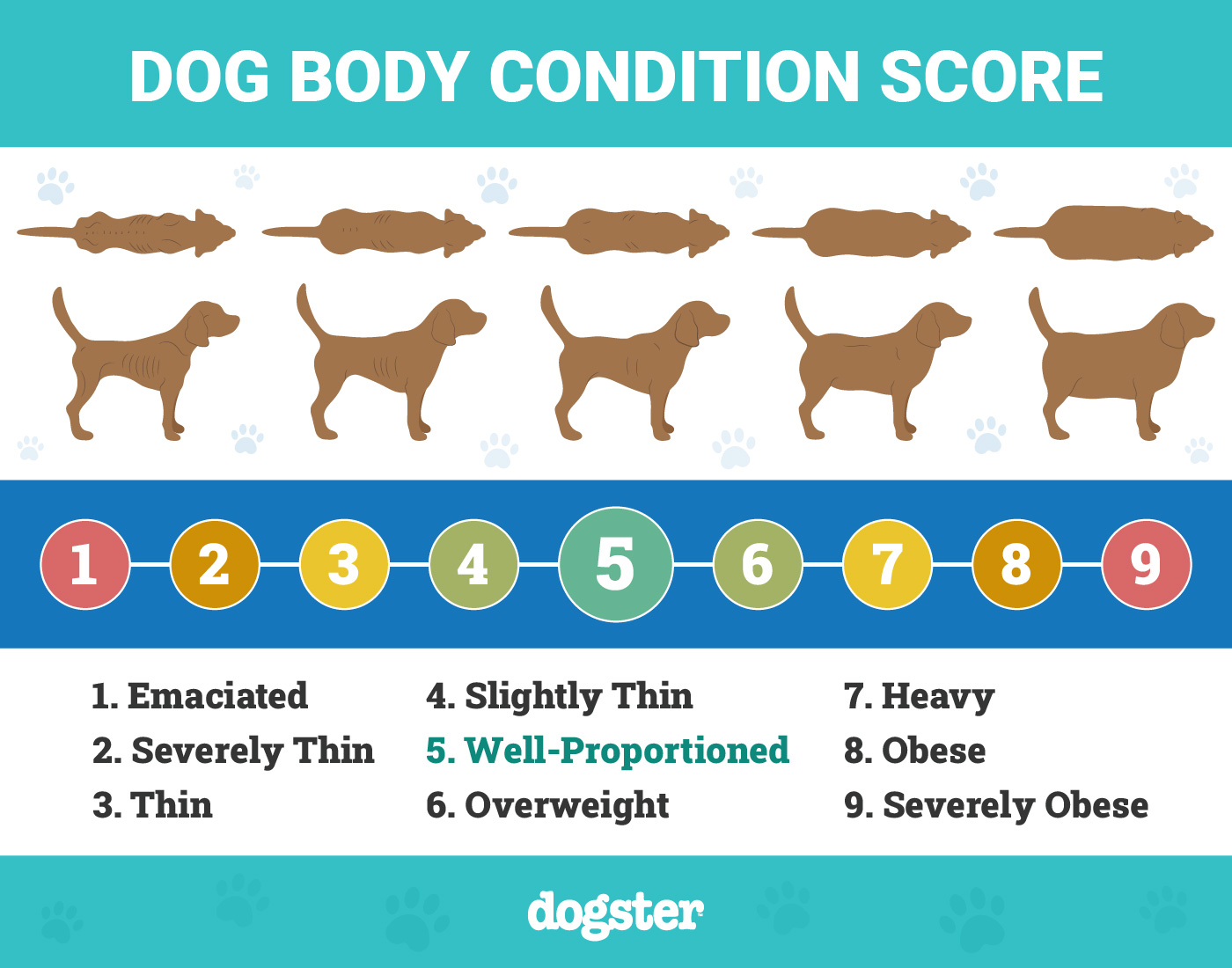
How Many Times a Day Should I Feed My French Bulldog?
As a newborn puppy, if you are bottle feeding, puppies need to eat every 2–4 hours around the clock. Once the puppy is weaned over to commercial puppy food, at minimum you should feed them twice daily. Depending on how big your Frenchie is, however, your veterinarian may recommend you feed them 3 or 4 times a day until they are bigger. This is to reduce the chance of your puppy developing a low blood sugar by feeding them at more frequent intervals.
Once they have reached adulthood, it’s always recommended to feed a dog 2 or 3 times a day. This is because many veterinarians believe the risk for bloat, or GDV, increases in dogs who are only fed once daily. While there are no consistent statistics to back up this claim, many veterinarians have seen cases of bloat occur more frequently in once-a-day eaters. Why risk it?
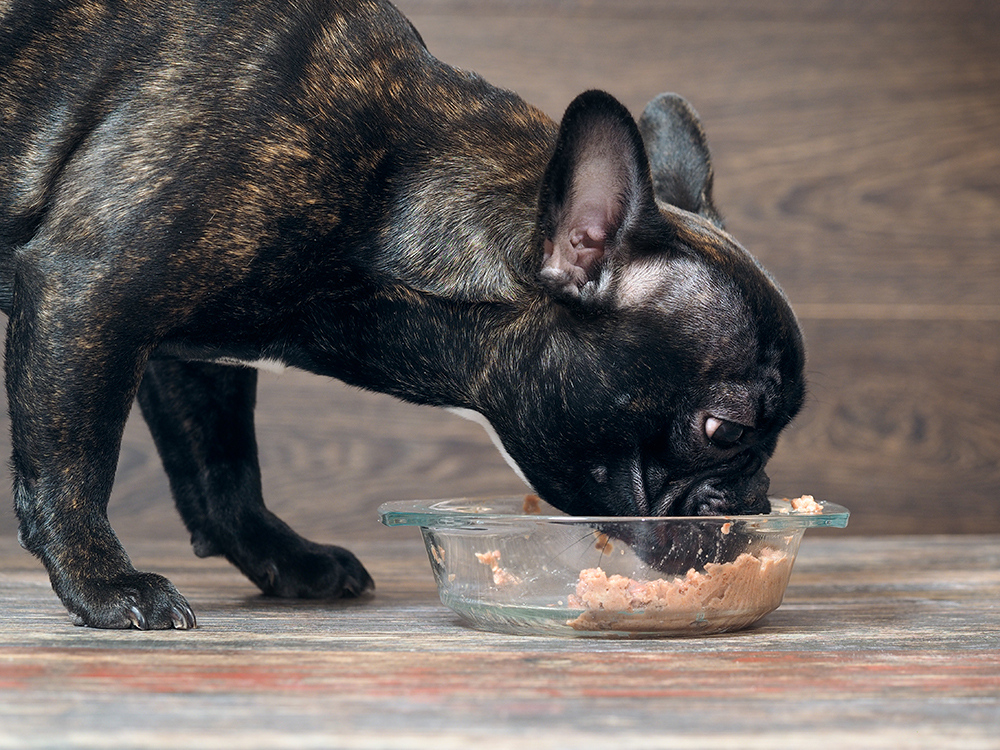
Wet/Canned Food Vs. Dry Kibble
People often wonder which is best for their dog. In the case of a French Bulldog, both options are completely appropriate. As long as the food is well balanced for the specific age of your Frenchie, and you calculate how much of each needs to be fed for their body weight, then you’re OK. Because canned food has a higher water content than kibble, you will need to feed more on a “per weight” basis. This can get expensive in larger dogs such as a Labrador. However, in a French Bulldog, the difference may not break the bank. Always check the kilocalories per cup of dry food and per can in order to calculate how much to feed your dog.

Conclusion
French Bulldogs are the most common breed in America for the second year running. Because they are always bred and not typically found running around as strays, most people will get a Frenchie from a breeder or rescue. You should never get a French Bulldog prior to 8 weeks of age, ensuring that they were nursing on mom for the first few months of life. If you happen to have an orphaned Frenchie, only feed PMR at the recommended amounts. Growing puppies should always receive commercially made, well-balanced puppy food, fed 3–4 times a day. Once fully grown, we still recommend feeding 2–3 times daily. Always steer clear of foods labeled “all ages”, no matter how old your dog is. The package of food is a good starting point for how much to feed your dog, though this should always be adjusted up or down based on your specific dog’ s needs.
- See also: How Many Puppies Can a French Bulldog Have? Vet-Verified Average Litter Size & Pregnancy Info
Featured Image Credit: Elayne Massaini, Shutterstock
